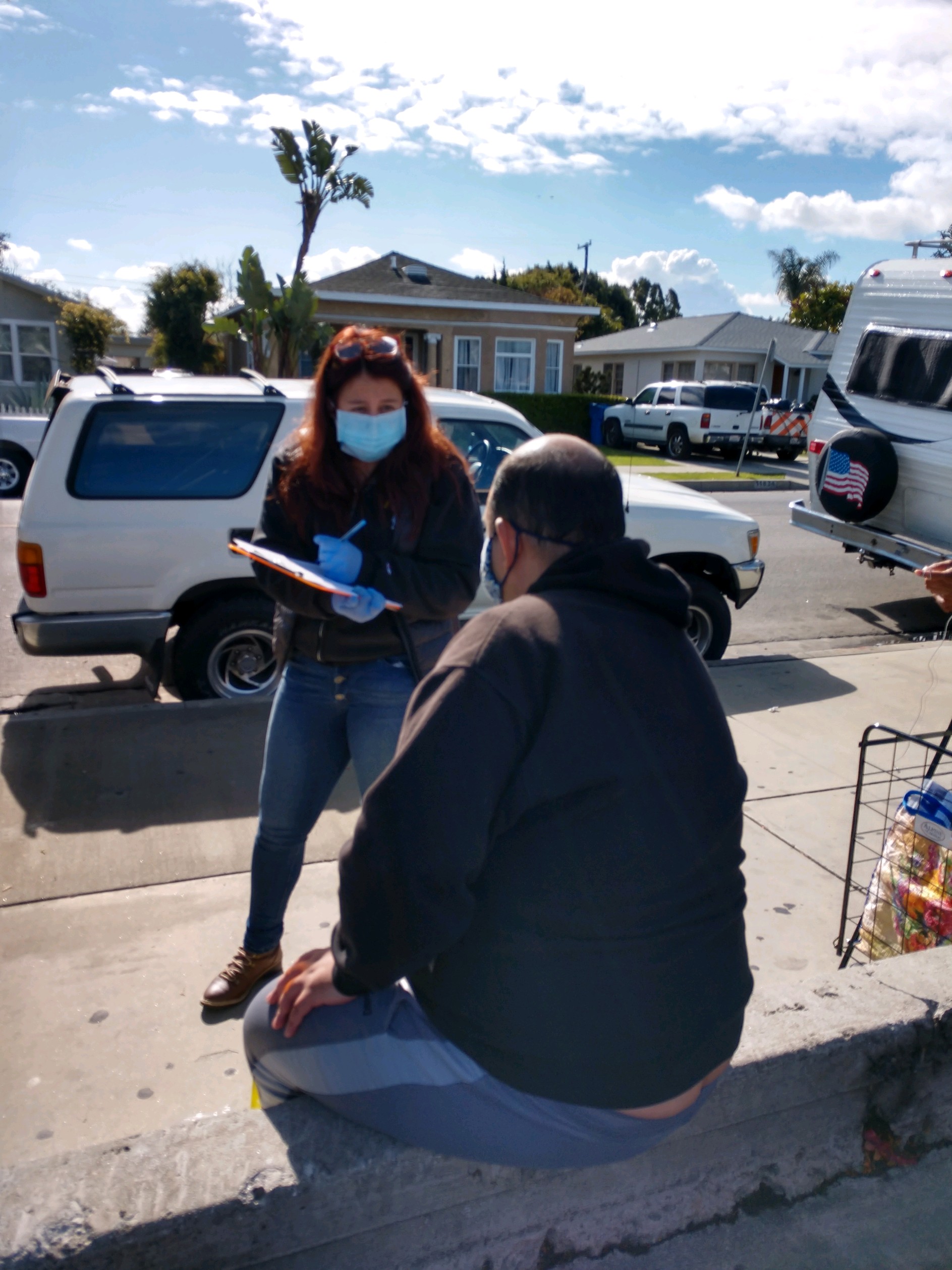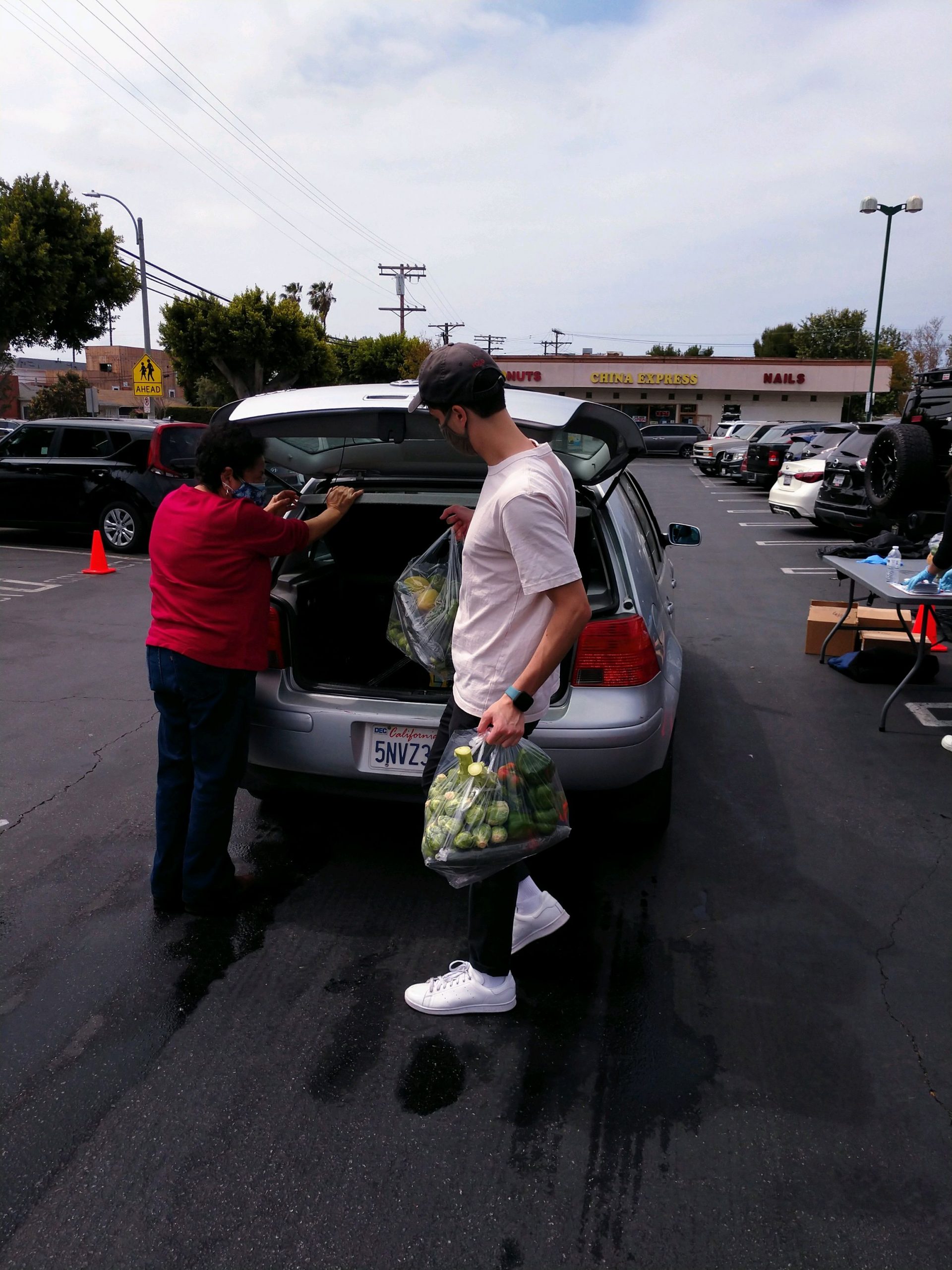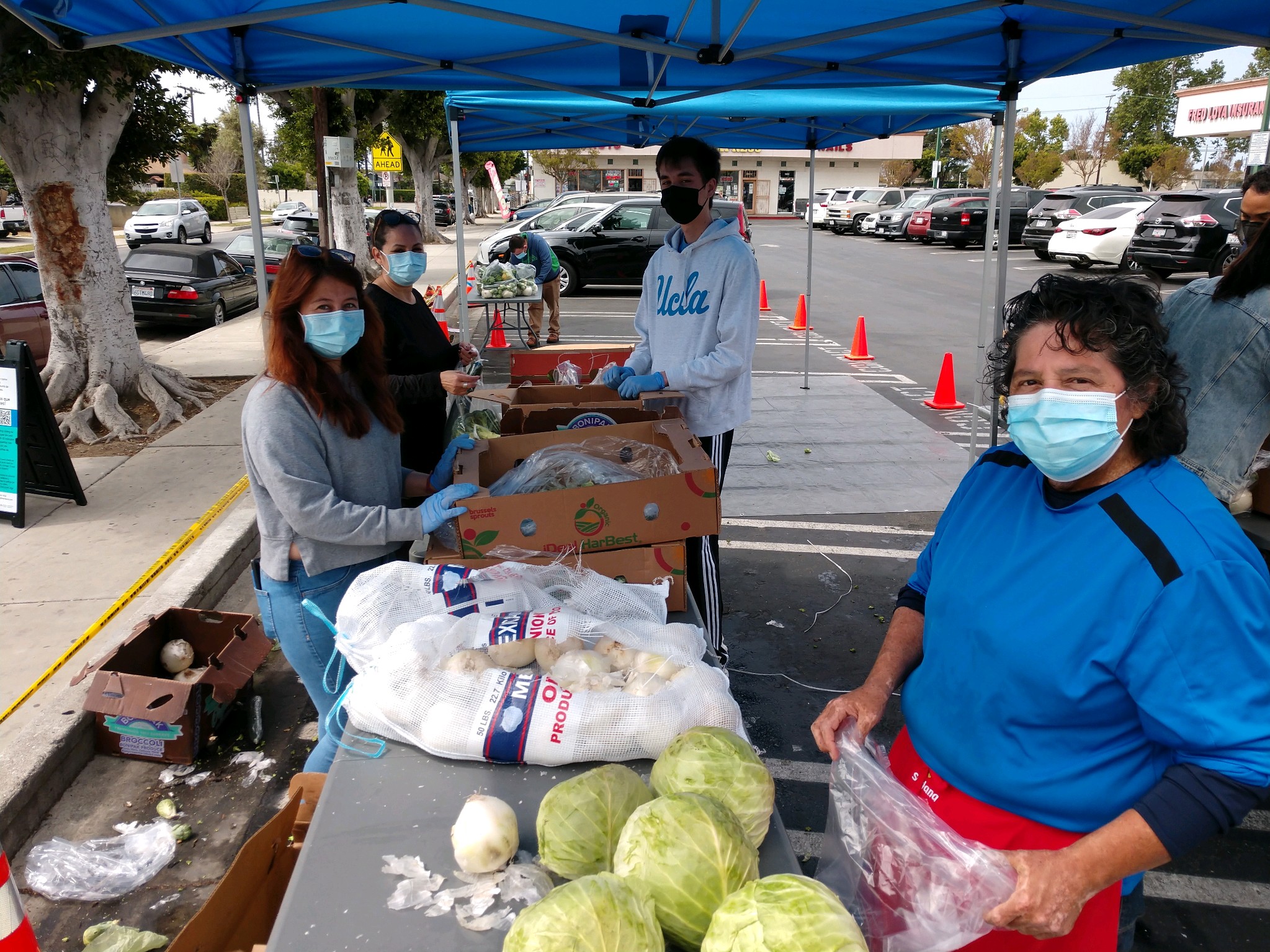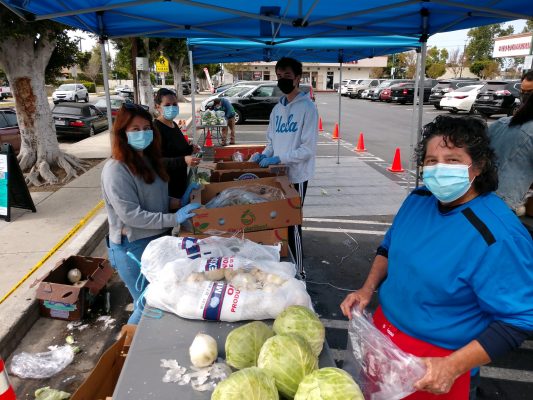
When Venice Family Clinic, Community Clinic Association of Los Angeles County (CCLAC), and Food Forward joined Catalyst, CCI’s award-winning design thinking program, they were curious about what food distribution could look like at a community clinic.
The team’s three members brought expertise spanning health care service delivery at a clinic known for innovation, a system-wide view of clinics across Los Angeles county, and intimate knowledge of the food distribution landscape. They hoped to use their time in the program to tackle a problem that many clinics face today — what role can clinics play in addressing food security?
The Challenge
The team planned to launch an event at Venice Family Clinic that would bring together food distribution with CalFresh registration, to meet people’s immediate and longer-term food needs. The event would also connect patients to supportive services and health screenings. The team’s longer-term vision was to write a toolkit based on their experience to help other clinics in Los Angeles and across the state launch their own clinic-based food programs. It was an exciting opportunity for the team to learn how to work across sectors: Food Forward is a community-based organization that fights hunger and prevents food waste; Venice Family Clinic and CCALAC are health care organizations that serve many patients who live below the poverty line and struggle to afford food.
Once the program started, the team moved quickly. Over the first few weeks, Venice Family Clinic organized a series of food events. When COVID-19 hit, Catalyst went on temporary hiatus, but the success of their food events continued. In the early months of the pandemic, Venice Family Clinic scaled up food distribution from twice a month to twice a week to meet the growing need for food during the pandemic, serving upwards of 1,500 families at each event. As the needs they were seeing changed, they adopted new approaches to food distribution. For instance, they started offering prepared meals in addition to hosting free food markets.
When the team returned to Catalyst — now operating virtually through livestreams and Zoom meetings — they shifted their focus toward how to sustain and scale their food distribution efforts to achieve their longer-term vision.
Solving for Sustainability
Design thinking is an approach to problem solving that is rooted in understanding people’s needs and experiences. Stakeholder interviews — just one of the design thinking methods taught in Catalyst — provided a “absolutely vital” breakthrough for the team, said Sarine Pogosyan, a health equity manager at CCALAC.

To sustain their successful food events the team knew they would need funding. They reasoned that health plans might be an interested stakeholder given the growing focus in health care on addressing peoples’ social needs — like transportation, food, and housing —to promote health. The team interviewed two health insurance plans to discuss possible pathways to reimbursement for their food distribution efforts. The first health plan told them, “We don’t know if it’s cost-effective or what will be reimbursed, but we know we want to do a food program.” Encouraged by that first conversation, they met with a second health plan. The second health plan agreed to support their food distribution events if the team could figure out how to document their work and demonstrate the impact of prescribing food on peoples’ health outcomes.
That was a lightbulb moment. The team quickly pivoted from focusing on the logistics of food distribution to collecting data to demonstrate improved health outcomes. “The big question for us became, how could a community clinic document their food work to report it to a health plan,” said Rigo Garcia, director of health education at Venice Family Clinic. They needed to come up with a consistent and reliable system to document their work and demonstrate health impact — a system that would be feasible to implement in all kinds of clinic settings. The team looked at the clinic landscape and saw that there was no standard way for clinics to document a free meal or a food market and “if we don’t document, it never occurred,” Garcia said. Scaling the program without a standardized way to document clinics’ efforts was not an option, they said, because each of the clinics across Los Angeles would come up with their own systems, making tracking impact nearly impossible.
Meanwhile, the team still needed to show the impact of their own ongoing food distribution events. “If we want this to be sustainable, we need to demonstrate that we are creating an impact. So, that’s when we started looking at clinical indicators from the patients, looking at social determinants of health,” said Pogosyan. The team knew it could demonstrate value, but it took some work to figure out how. After manually reviewing patient charts and identifying patients who attended food events using an Excel spreadsheet, they were able to see encouraging correlations. They discovered:
- Around 7,500 people were being served each month
- Around 104,304 pounds of food — or about 69,536 meals — were being distributed each month
- 60 percent of patients with diabetes showed a decrease in A1C levels.
- 70 percent of pregnant women no longer showed iron deficiency.
Planning for the Future
 Their new goal, they say, is to show the impact of treating food as medicine. “Community health centers,” Rigo shared, “are being told that we need to start focusing on food, but no one has told us how. Where do we get the food? How do we distribute it?”
Their new goal, they say, is to show the impact of treating food as medicine. “Community health centers,” Rigo shared, “are being told that we need to start focusing on food, but no one has told us how. Where do we get the food? How do we distribute it?”
The team has started to see their work as part of a “food pharmacy” approach to health care, which emphasizes the benefits of helping patients obtain fresh, local food. They are continuing to develop a scalable approach to demonstrating the health benefits of clinic-based food distribution, and they now see CalAIM — California’s plan to expand its health insurance program for low-income people beyond traditional doctor visits into the realm of social services — as a possible path to reimbursement and, ultimately, sustainability.
As they expand their efforts, the team continues to innovate and refine their approach. They have started using more sophisticated methods to tell health plans about their successes. For example, the team is testing out a population health management software, i2iTracks, to analyze their data. “For everyone who has come to a food event… we will be able to pull a report showing A1C, blood pressure, BMI,” said Rigo. They are also exploring the prospect of bringing tracking and reporting into their electronic health record. “We know that this is effective, now it’s time to standardize,” Rigo shared, so “we can make sure clinics in Northern California are doing the same thing as clinics in Southern California.”
Catalyst helped the team understand their problem differently, in a way that drove them towards root causes. “We started with a solution as our problem,” reflected Pearson King, agency relations and field manager at Food Forward, thinking back to the team’s goals at the beginning of the Catalyst. “At first, we thought the problem was that ‘this clinic doesn’t have food distribution.’” After some time in the program he realized, “Okay, wait, that isn’t really the problem. And as we kept going further, we kept redefining the problem and ultimately it comes back to the fact that there isn’t the technological capacity right now to drive the conversation towards reimbursement and long-term understanding of the effects of [treating food as medicine].” Going through the process of uncovering “the causes of causes,” they shared, and identifying approaches to solve them was one of the biggest benefits of participating in Catalyst.
Anytime someone asks Pogosyan about the coolest thing she’s done lately, she tells them about Catalyst and her team’s food-as-medicine project. She added, “I feel myself leaning on a lot of the Catalyst teaching and lessons in everyday non-Catalyst work.” For Pogosyan, this multisector partnership “really just proved how things will work if all the correct stakeholders come together, and are passionate about something, and move it forward.”

Find this useful or interesting? We’re constantly sharing stuff like this. Sign up to receive our newsletter to stay in the loop.


